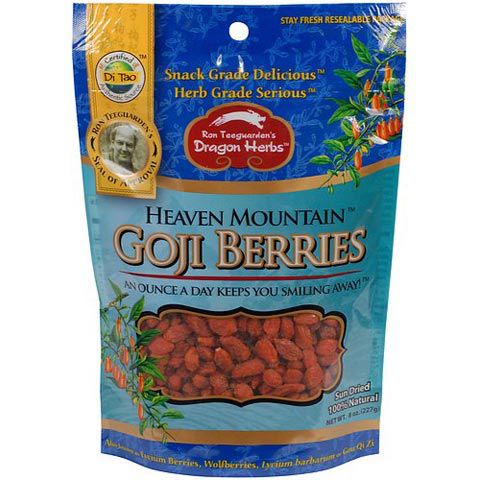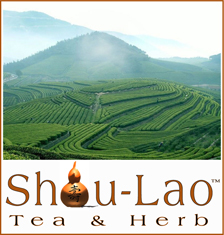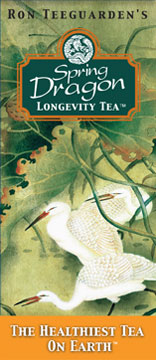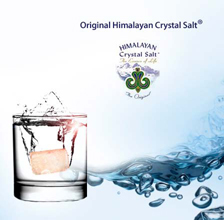Heaven Mountain Goji Berries

click to enlarge
Heaven Mountain Goji Berries
Dragon Herbs
8 oz Bag Whole Goji

Millions of people throughout Asia consume Goji berries every day for both their unique, satisfying flavor, and for their health benefits. In China’s first herbal encyclopedia, Shen Nong’s Materia Medica, written in the 1st century B.C., Goji was classified as a “superior tonic,” a class of herbs that people should take on an on-going basis to preserve youth and to promote general well being of life. Goji’s superior tonic classification has stood the test of time. Two thousand years later, Goji berries are still being consumed regularly throughout Asian civilizations for those purported reasons. We now know that Goji berries are a “high-ORAC” antioxidant-rich superfruit featuring important phytochemicals such a beta-carotene, zeaxanthin, betaine, polysaccharides (LBPs), trace minerals and vitamins.

Heaven Mountain® Goji Berries, The Only Goji Berries That Are Snack-Grade Delicious™
Heaven Mountain® Goji Berries are plump, juicy, naturally sweet, and absolutely delicious. Unlike other Gojis on the market, Heaven Mountain® Goji Berries are sweeter, fleshier and have less seeds. They have a much higher moisture level which contributes to their texture as plump and juicy.
Most Gojis on the market are rock hard. This is not without a reason. All the Gojis sold in the US come from China, whether they are labeled as Himalayan, Tibetan, or Wild. That translates to a very long transit time from the growing regions to the hands of the consumers. Typically, the berries reach the consumers at least 4-6 months after they are harvested. To stay shelf stable, most Goji farmers dry their Goji until the berries are very bone dry and very hard.
After years of research and development, Dragon Herbs has developed a special handling process and a custom designed packaging that allows the berries’ natural moisture level to be retained while satisfying the shelf stability required in commercial trade nowadays.
In a test conducted by an independent lab, Heaven Mountain® Goji Berries are shown to be twice as juicy as a competitor’s.
What Makes Heaven Mountain® Goji Berries So Special?
Simply put, Heaven Mountain. Heaven Mountain is a remote mountain range in the northern region of Xin Jiang Province, China. In a more sophisticated way, the concept of Di Dao used in the world of herbalism can best describe the relationship between the geographical and geological features of the region and the phyto chemical profile of Heaven Mountain® Goji Berries.

The “Di Tao” of Herbs
There’s a great concept in China known as Di Tao. The literal translation of Di Tao is “Earth Tao,” or “the Way of the Earth.” The Chinese dictionary definition of Di Tao is “from the place noted for the product ~ genuine, authentic, not from an inferior or counterfeit source.” According to the regulations of the Chinese Pharmacopeia, all herbal products manufactured and sold in China must utilize herbs that are Di Tao - that is, the herbs must come from a source that is considered legitimate and genuine.
All plants are the product of their growing environment and conditions. Different regions have their distinctive make-up of water, soil, sunshine, climate, and biological distribution. The varying methodologies adopted by different regions in their cultivation, collection, and final preparation of the herbs further differentiate the herbs from different sources. The Di Tao source of an herb is gradually established through the historical use of the herbs. By documenting how herbs from different origins differ in their pharmacological effects on the human body, the regions or sources that produce the most desired results have slowly come to be recognized as the authentic genuine source, Di Tao, both by common knowledge among the practicing herbalists as well as by government supported official recognition in the materia medica.
Heaven Mountain® Goji Berries is one such example. The water, the soil, the sunshine and the weather have the precise qualities necessary for producing the best, richest, tastiest, most potent Goji berries on Earth. As a result, they have an extraordinary and balanced phyto-nutrient profile.
Water
As part of the enormous Gobi Desert that covers southern Mongolia and northern China, Xin Jiang receives little to no rain each year. Every drop of water in the growing fields is derived from the melted snow and glacial runoff from the pristine Heaven Mountain. This water is pure and structured – it is nature’s ultimate irrigation system.

Soil
The virgin land of the Gobi Desert has little vegetation. It has a very high content of alkaline minerals. The pH level of the soil can be as high as 8.7 (17 times more alkaline than neutral) and the soil salt content can reach 1%. Few plants can survive in this kind of harsh environment. Goji, however, being an extremely adaptable plant, thrives here.
Daylight Duration
Xin Jiang province has the longest daylight duration among all provinces in China (Tibet included). It averages 2550 to 3300 hours of sunshine per year. The intensive sun light allows for much more productive photosynthesis in the Goji plants, leading to more flesh, sweeter taste, and naturally, higher content of active ingredients such as Lycium Polysaccharides (LBP).
 Precipitous Daily Temperature Fluctuation
Precipitous Daily Temperature Fluctuation
Another unique weather characteristic of Xin Jiang is the precipitous temperature fluctuation between day and night, usually as much as 36 to 45 °F within a single day. The locals joke that in Xin Jiang, no traveling is necessary in order to experience the four seasons within one day. It is quite common that you start the day with a winter jacket, strip down to a silk shirt at noon, then at night, you can enjoy their famous watermelons, next to a bonfire, that is.
It is Heaven Mountain Goji’s superb adaptability that makes it a highly revered adaptogenic, stressfighting tonic herb.
The Ministry of Agriculture of the People’s Republic of China has officially certified Heaven Mountain goji berries as Di Tao.
Heaven Mountain® Goji Berries, a GREEN Hero In Reversing Desertification.
Not only are the Heaven Mountain® Goji Berries good for you, they are good for the earth as well.
Because of Gojis’ superb adaptability, they thrive where other plants fail to survive. The Goji plants are drought tolerant, cold resistant, and they can endure, and even thrive in, saline and alkaline soil. Goji plants have highly developed root branches which bind firmly with the soil. Many Goji trees are being planted in northern and western China as a wind breaker, sand binder and soil ameliorator as part of a program to reverse desertification.

Himalayan Goji, a Myth Still To Be Demystified.
Whether or not Goji originated from the Himalayas is still being heatedly debated, the Gojis that do come to the West all share one country of origin, China. Many of them labeled as Himalayan, some labeled as Tibetan Wild Crafted. With Tibet being the only Himalayan region of China, it can be reasonably presumed that all the Himalayan/Tibetan Gojis come from Tibet.
So, does Tibet historically or currently or actually grow Goji? Well, we have found no evidence of that, not as of yet. Of the many materia medica that provide detailed description of Lycium barbarum (Goji), none ever mentioned Tibet as a geological origin of Goji, wild or cultivated. Ron Teeguarden, master herbalist and author of The Ancient Wisdom of the Chinese Tonic Herbs published by Warner Books, has been a purveyor of Lycium barbarum since 1971. Ron has visited Himalayas numerous times. He has never known of Himalayan Goji in his 40 years of herbal career. We have color coded every province of China that has been documented as growing Goji, Tibet is not on that list. Even the author who wrote the book Goji, the Himalayan Health Secret that introduced Goji to the West does NOT suggest Himalayan Gojis are attainable in any way.

“The sad truth is that you can’t (get Goji berries of Himalayan Origin). There simply aren’t enough to go around. Goji vines are not cultivated in the Himalayas; they simply grow in the wild, often in the most inaccessible places.”
If Tibet does not grow Goji, then where do all the Himalayan Gojis on the market come from? A myth still to be demystified.
In addition, there is no written historical record of the usage of Goji in Tibet, nor is the tremendous body of scientific research conducted to date on Goji based on a Himalayan sub-species. Virtually all research on Goji has used Goji from Heaven Mountain, Xin Jiang or Northern China. If we consume Goji for its tremendous health benefits, then we ought to consume only the same Goji used in this voluminous research.
Heaven Mountain® Goji Berries Are Herb Grade Serious™
Goji’s health benefits are well documented by numerous research studies conducted across the globe.
What you probably don’t know are the stories of Goji and two of the most famous herbalists in China’s history who are also the most revered experts in the art of longevity. As authors of herbalism, they knew everything there was about every herb and they had access to all of them. Both chose to consume Goji daily throughout their entire lives and both lived famously to very old age. Please bear in mind that two thousand years ago, a human being’s average lifespan was only around twenty years. As of the 18th century, the average lifespan barely increased to around thirty years. The longevity of these two great herbal masters during their era is truly remarkable.
Tao Hong-Jing (456-536 A.D.)
A Taoist master who specialized in the study of herbs, Tao compiled “Commentary on Sheng Nong’s Materia Medica”, one of the most valuable books on medicinal and tonic herbs in China’s history. He also authored “Recordings of the Art of Health and Life Preservation”. Tao Hong-Jing drank Goji tea everyday. He lived to be 80 years old.
Sun Si-Miao (581-682 A.D.)
Sun is also known as the Herb King. Sun lived to be 101 years of age. He was born with a very weak constitution and was very sickly in his childhood. His family was almost bankrupted with his medical expenses.
 Sun devoted his lifetime to the art of medicine. His monumental books, “Prescriptions Worth a Thousand Pieces of Gold” and “Supplement to Prescriptions Worth a Thousand Pieces of Gold,” have been regarded as compilation of China’s medical achievements up to the 7th century. Sun believed if his work could save a single life, it would surpass the benefaction of a thousand pieces of gold. He wrote his first book at the age of 71, and he finished his “Supplement” book at the age of 100. A year after that book’s completion, he died peacefully. This is not just longevity, this is vigor at an advanced age.
Sun devoted his lifetime to the art of medicine. His monumental books, “Prescriptions Worth a Thousand Pieces of Gold” and “Supplement to Prescriptions Worth a Thousand Pieces of Gold,” have been regarded as compilation of China’s medical achievements up to the 7th century. Sun believed if his work could save a single life, it would surpass the benefaction of a thousand pieces of gold. He wrote his first book at the age of 71, and he finished his “Supplement” book at the age of 100. A year after that book’s completion, he died peacefully. This is not just longevity, this is vigor at an advanced age.
Because of his weak constitution, Sun Si-Miao was a very disciplined practitioner of the art of life preservation and consumed Goji every morning and every night throughout his entire life. He was as famous for his longevity as he was for his work. His secrets for achieving centenarian status 1500 years ago remain an active topic even today.
Compliance – Ron Teeguarden’s First Rule of Tonic Herbalism
When it comes to benefiting from herbs, compliance matters the most. If you don’t take your herbs, they cannot do you any good. Many people buy Goji berries that lack the sweet flavor and are tough to chew. The market is full of such products. They eat them for a little while and then stop, never eating a Goji again. This is extremely unfortunate because, as proven by the Herb King himself, Gojis’ benefits are cumulative and it should be consumed daily, or at least regularly, throughout one’s lifetime. Fortunately, the best Goji, in terms of quality and tonic benefits, is also the sweetest and tastiest Goji. People who discover this high quality goji enjoy eating a handful or two a day, and compliance is not only easy, but compelling. And that is why flavor, sweetness and texture are so important. “Compliance is the first rule of tonic herbalism.” Heaven Mountain® Goji Berries are the only snack grade delicious Goji.
How To Identify Snack Grade Delicious Goji™?
Heaven Mountain Goji rocks! But “dry” Gojis are rocks. They may be good for cooking, but no good for snacking. Some Goji berries are so rock hard that it hurts to swallow them. Here is how you can tell the snack grade Goji apart from non snack grade Goji's:
1. Tasting is believing. The best way to know is by tasting. Buy a small pack and make sure you like what you eat. We are confident that you will like our Heaven Mountain® Goji because most people do. Once they taste our samples, they never eat other Gojis again. With Dragon Herbs, you are more than welcome to try our Goji-To-Go sample pack first.
2. The shake-it-before-you-buy-it test. If you don’t want to spend the money, then try this method as a quick test. It does not guarantee taste, but it does tell you if the berries are bone dry or juicy. Shake the bag. If it sounds like a maraca, they are probably very dry and will not be enjoyable. Plump juicy snack grade Goji berries should barely rattle.
More Detail
Recipe Suggestions On How To Use Goji Berries
In China and Tibet the berries are usually eaten raw or made into teas and soups. If you look for Asian recipes using the dried berries you will find such things as chicken soup that contain goji berries or a warm hot grain cereal that has goji berries added to it. Asians often make a tea by boiling herbs and the goji fruit in water.
If you look at recipes from the U.S. you will find recipes that call for the goji berries to be soaked overnight (or even for 15-20 minutes to soften them) and whipped in a blender in the morning. This “goji puree” is then the base for a smoothie or delicious drink.
Here are examples of Chinese Goji Berry Soups :
Chinese Wolfberry & Sea Bass Soup
1 sea bass (any fish seems to work)
½ cup goji berries (wolfberries)
1 pound mushrooms
1 scallion, chopped
5 slices of fresh ginger
5 cups of broth
Salt (use a natural mineral-rich salt, if you can)
5 Tablespoons rice wine
1 teaspoon hoisin sauce
- Smear fish with 1 tbsp of rice wine and a little salt.
- Add in the wolfberries, button mushrooms, scallion, ginger and hoisin sauce.
- Boil the stock in a separate medium to large sauce pan.
- Place the seasoned fish into the sauce pan containing the stock.
- Simmer the soup until the fish is done (about 20 minutes)
- Add rice wine and salt to season before serving.
Sizzling Rice Soup
In this delicious soup, the crispy rice crackles and pops in the hot soup just before serving. Serves 6 people
Ingredients:
1/2 cup dried black mushrooms, stems removed
1/2 cup gou qi zi (dried Chinese wolfberry)
1/2 cup chicken breast, sliced thin
1/4 cup spring onions
Boiling water
6 cups chicken stock
1 cup mushroom stock (reserved liquid from soaking the dried mushrooms)
1/4 cup bamboo shoots, sliced thin
1/2 cup snow peas (can substitute frozen peas)
1/4 cup fresh shrimp, shelled, deveined, cut into quarters
1 teaspoon salt
1 tablespoon light soy sauce
1 tablespoon sesame seed oil
Crispy rice (See Below)
Coconut Oil for deep frying
Directions:
Soak mushrooms in hot water for about 20 minutes. Strain the liquid and reserve 1 cup. Cut mushrooms into quarters and set aside.
Bring water to boil. Put in chicken and pork. Cook until the color changes. Rinse in cold water. Drain.
Add the chicken stock to the reserved mushroom liquid in a saucepan and bring to a boil. Add the chicken, pork, mushrooms, and bamboo shoots. Then add the peas and shrimp. Bring to boil again. Season with salt and soy sauce. Add the sesame seed oil. Bring to a boil. Remove to a tureen or bowl.
Heat wok and add oil for deep-frying. When oil is ready, prepare the Crispy Rice. Deep-fry until it puffs and turns brown. Drain on paper towels.
At the table, slide the sizzling rice into the soup. The rice will make crackling sounds as it meets the hot broth.
To Make Crispy Rice
Preparation Time: 1 1/2 hours
Yield: 8 - 10 squares
Rinse 1 cup of long or medium grain rice.
In a pot, add 1 1/2 cups water (1 1/4 cups for medium grain rice) to the rice and bring to a boil.
Cover and simmer on low heat for 30 minutes. Remove from burner and allow to cool.
While rice is cooling, preheat oven to 300 degrees Fahrenheit.
Place the rice on a baking sheet, making sure that it is about, but no more than, 1/4-inch thick.
Bake the rice for 50 - 55 minutes, until it is dry. Cool and cut into 2-inch squares. Store in a canister until needed. Do not freeze.
Trail Mixes
Goji berries also go very well with coconut chips and soaked dried nuts. People use this combination for home-made snack bars, trail mixes, granola, and other snacks.
Goji berry Juice
To make your own Goji berry juice drink here is a basic recipe:
1/4 cup goji berries
2 cups pure water
1. Soak berries in water for 4 hours or more, overnight is fine.
2. Blend in blender until well blended.
Optional: 1/4 cup fresh blackberries, raspberries or blueberries can be added to the puree. You can also add other fresh fruit such as apple, mango and/or banana. If you use just the goji berries you will have a nice, nutritious goji berry juice. If you add additional fruit you will have a great smoothie. Most goji juice companies utilize berries which are low in carbohydrates and high in antioxidants such as blueberries and raspberries in their concotions.
If the above juice is not sweet enough for you or your family you may want to add a little natural, raw honey or raw agave syrup. Another option is to soak the goji berries with dried dates or raisins. this will make the juice darker and sweeter.
Lychee Ice Jelly With Wolfberries
For those with a sweet tooth, try this recipe and cool down on those hot Summer days. Easy to make too!
Ingredients:
1/2 tsp (2g) crystal jelly konnyaku powder
1/2 tsp (2g) ice jelly powder (Ai Yu Jelly Powder)
60g sweetener of choice
450ml water
10 wolfberries, soaked till softened
1 can fresh lychee
150ml canned lychee syrup
1 1/2 tsp lemon juice
Method:
1. Combine crystal jelly Konnyaku powder and 35g sugar well and set aside.
2. Combine ice jelly powder and 25g sugar well and set aside.
3. Strain lychees to collect syrup and set aside.
4. Bring water to boil, add in crystal jelly mixture and boil for 3 minutes. Followed by add in ice jelly mixture, stir till boiling before turn off the heat.
5. Add in lychee syrup and lemon juice and mix well.
6. Place wolfberries and lychees into individual glasses, pour cooked mixture and let it cool and solidify before transfering to the refrigerator.




